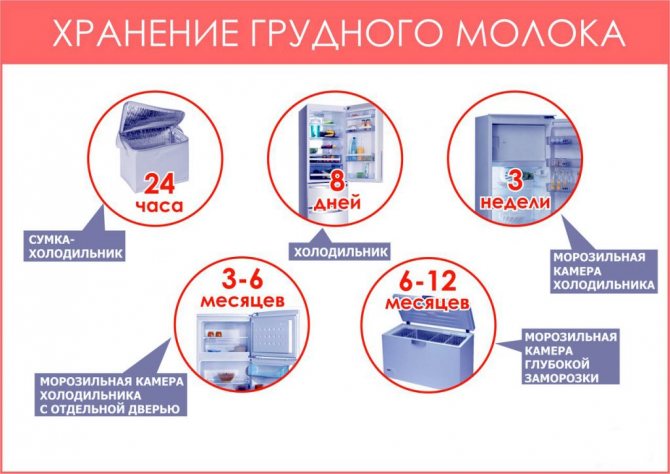Every woman who will soon become a mother thinks about whether she needs to express breast milk? Most often, the opinions of doctors and non-specialists differ. Nevertheless, this issue has been discussed for quite a long time.
Surely all women know that expressing breast milk can increase the strength of lactation and remove congestion in the breast. However, mothers are also sure that such a procedure takes place in a serious and rather sick condition, which is why not all women pump.
Some mothers perform the procedure once and realize that they are not ready to endure the pain, as a result of which they stop the process. Let's figure out whether you need to express milk? And if so, how to pump correctly?
What is it for?
Not everyone knows why to express milk and what will happen if you don’t express. Of course, each person decides for himself whether to express milk or not.
There may be several reasons for this process:
- If you do not want the body to have stagnation of the mammary gland, leading to mastitis (inflammation), then it is better to use decantation.
- The baby stopped asking for breastfeeding during the breastfeeding break. Therefore, the mother needs to feed the baby her milk from special containers.
- If you notice that the breast is very full and the nipple is tense, then you need to help the newborn to latch on. To do this, you should do a little pumping so that the tension subsides, then the baby will be able to eat on his own.
- If you have a busy work schedule or urgent matters, it is better to take care of your baby’s nutrition in advance. Expressed milk is much better accepted by the body than alternative formulas.
- If the mother takes pills, then it is necessary to stop breastfeeding, and this procedure will help maintain lactation.
- In case of insufficient lactation, there is also a need to express a lot.
- If a mother feels pain in the chest, but there is no way to give the baby food, pumping will help.
It should be said that such situations occur in all mothers, so you need to familiarize yourself with all the features of this process in advance. First of all, you need to find out how much, when and how to express breast milk, so that the procedure brings only benefits, but does not aggravate the situation.
When and how often should you pump?
Let's take a look at the reasons, since it depends on them how often and how many times this process needs to be performed:
- In case of stagnation - once every 1-2 hours. During the milk extraction process, it will take as much as possible to reduce the density. The maximum time for such a procedure is half an hour. If you deviate from these instructions, you can easily injure the mammary gland.
- In order for the amount of milk secretion to increase - immediately after each feeding and 1-2 times during the feeding period of the newborn. Typically, pumping takes 10 minutes after feeding and 15 minutes in between.
- If you feel that your breasts are full, you can pump more often for relief, but only if you feel pain. In this case, you should squeeze out a little milk to make it easier. Don't forget, the more you express, the more milk you will have next time. It is best to perform the procedure within 5 minutes.
- If you decide to take a break, but at the same time want the milk to continue to be released , then you need to express once every 3 hours, while comparing the baby’s feeding regimen. You need to squeeze out such an amount of liquid so that when breastfeeding is resumed, the baby can eat. The process takes 20-30 minutes.
- If the mother wants milk to remain in reserve, then she should express herself a couple of times a day in between feeding the baby. You should independently choose the time and amount of expressed milk, and do not forget to compare the data so that the next time you eat food, the breasts have time to collect the required amount of fluid, and the baby does not feel hungry.
How does hind milk remaining in the breast turn into fore milk at the next feeding?
Many people know that the fat content of milk increases towards the end of feeding. The baby began to suckle at the breast - and initially receives less fatty milk (it is called foremilk), which quenches his thirst. And at the end of feeding, the baby reaches fatty hind milk. At the next feeding, he starts again with the front one, and for dessert gets the back one.
How does milk turn from hind milk to fore milk again between feedings? This question is asked quite often on forums. Let's try to figure it out.
Milk, as modern research shows, is produced in the breast constantly, just at different speeds; in empty breasts, very quickly; in filled breasts, its synthesis practically stops. This is discussed in more detail in the article about breast capacity.
Let's imagine: the baby ate and fell asleep soundly. Time passes, milk gradually accumulates in the ducts of the mother's breast. Fat droplets-globules during this period of time slowly settle on the walls of the milk ducts. And in the lumen of the ducts, accordingly, less fatty milk remains.
Strictly speaking, the same process occurs that we can observe in a glass of expressed milk, which was allowed to stand for a while - remember this separation? It sometimes even scares mothers. And this is just the cream being separated.
The breast with its labyrinth of ducts, of course, is not a bank of milk, but nevertheless, the process of sedimentation of fat globules is somewhat similar. The longer the baby does not suck, the more noticeable this separation is.
But then the baby begins to suck: first, he quenches his thirst and receives “skimmed” milk from the lumen of the ducts. And then the flow of milk gradually removes these droplets from the walls, plus the mother’s milk separation reflex (“let-down”) is triggered, and special cells begin to squeeze milk out of the alveoli and ducts, even more strongly driving fat globules from their homes. As the breast empties, the baby receives increasingly rich milk.
The fat content of milk does not increase sharply at some point in feeding; there is a clear boundary between “this is foremilk” and “but this is foremilk”; it gradually increases from the beginning to the end of feeding. The baby can track that he has eaten enough and let go of the breast when he is full.
He releases the breast - the milk returns to the deeper ducts (this was visible when observed with an ultrasound machine).
The droplets slowly begin to settle on the walls again - everything repeats itself. But if the baby asks for the breast again soon, he will receive quite fatty milk: the “front” milk in a feeding, which happened half an hour after the previous one, may be fattier than the hindmilk from a very full breast after an interval of 3.5 - 4 hours. Tweet Pin It
What actions to take the first time
Most likely, the first pumping will take place in the maternity hospital. Don't worry if milk comes out in large quantities. This pumping will help the mother avoid further lactostasis. And subsequent pumping at home should be done to prevent pain, which prevents the baby from latching onto the nipple.
It is best to adhere to this scheme:
- Pull yourself together and don't get nervous.
- Call a nurse who, if the technique is incorrect, will help you figure it out.
- Be sure to monitor your feelings, as pain should not be present.
- It is necessary to express milk only until relief, so that after this lactation does not become even greater.
Pumping while breastfeeding
There is no need for a woman to express her breasts during lactation. If the milk comes on demand, is available in sufficient quantities and does not cause problems, the mother can relax and enjoy time with the baby.
With the help of pumping, you can regulate lactation if the need arises. Depending on what and how often you treat your breasts, the process of milk production will change.
How to express breast milk by hand
If you want milk production to occur in reserve, or decide to increase lactation, then you should familiarize yourself with how to express yourself correctly. Many women do not know the basic rules when giving birth to a child, as a result of which a large number of mistakes are made.
To prevent this from happening to you, you just need to carefully read the recommendations on how to express milk correctly:
- Take a comfortable position and try to relax.
- Keep a clean container near your chest.
- Place your thumb on top of the halos and your index finger opposite. The other fingers should be positioned so that they support the chest.
- Then press on your chest with your thumb and forefinger. You need to lightly and gently pull the nipple inside the breast.
- Now you should begin this procedure, squeezing the breast behind the nipple and areola.
- Each breast must be strained for 5 minutes, do not forget to alternate them. You can reduce each subsequent approach by 1 minute.
Don't worry if the milk doesn't come out right away, just continue the procedure. If the mother feels discomfort, then the technique of expressing breast milk is not applied correctly. If pain is not felt, then the process proceeds in the right direction.
What not to do:
- Squeeze your nipples as this will have no effect.
- So that the hand slides over the entire surface of the chest. Remove milk from the breast if it gets on it.
- Ask your husband to pump for you. This will harm your body.
- Watch how liquid is drawn into the vessel. Studies have shown that in the absence of this action, you can get even more milk.
The first couple of times, pumping will take about 30 minutes. This period of time will help collect all available milk. Before finishing, feel your breasts, they should become less dense.
Expressing with a breast pump
Some women express their breasts using a breast pump. Most often, this procedure takes place in two stages, the first of which is still manual expression of breast milk. It must be said that when pumping breasts that are soft to the touch or are completely full, the technique does not work in all cases.
Now there are many varieties of this technique, but you need to select it for each person independently, relying on sensations. For example, some people prefer the electric option, while others may find it rough.
What is better to express: by hand or with a breast pump, Dr. Komarovsky:
Hands or breast pump?
A woman who decides to pump always has a question about what to use to empty her breasts. Since ancient times, manual breast pumps, reminiscent of a syringe bulb, have been used for this purpose. However, their traction is insufficient, and the procedure itself is painful.
Modern devices for expressing are manual and electric breast pumps. The latter work quickly and do not cause discomfort. Using a small electric machine, you can get a portion of milk for a single feeding in a few minutes. The downside to electric breast pumps is that they can go overboard. Expressing your milk fully and often will increase your milk production. This threatens a woman with hyperlactation with subsequent cases of lactostasis and mastitis.

Expressing by hand is more difficult and takes longer. However, this way you can completely control the process of emptying your breasts. Manual expression creates the illusion of natural feeding, which has a beneficial effect on the mammary glands. During the procedure, the woman independently changes the pressure, pressure and position of her fingers. In addition, hand expression does not require material costs.
As an alternative, modern manual breast pumps can be used. They work in a similar way to electric ones, but allow the woman to control the pressure and speed of milk flow.
Rules for feeding a baby with expressed milk
If you are going to feed your baby, be sure to heat the liquid to a temperature of 36 degrees. If the milk was previously in the refrigerator, then it must be immersed in boiling water or another heating method must be used.
If you stored milk in the freezer, you should put it in the refrigerator for a while before using it so that it becomes liquid. Then heat it as above.
Doctors say that it is undesirable to use a microwave oven to heat milk, since it kills all the beneficial elements.
You may notice that the milk has separated. To return it to its normal state, you need to shake the bottle a couple of times before drinking.
Shelf life of breast milk
It all depends on how you stored your expressed milk:
- Room temperature – no more than 6-8 hours. Take into account the fact: if the apartment is quite warm, then milk cannot be stored for more than 4 hours.
- Refrigerator – 2 days.
- Freezer – 1 year.












